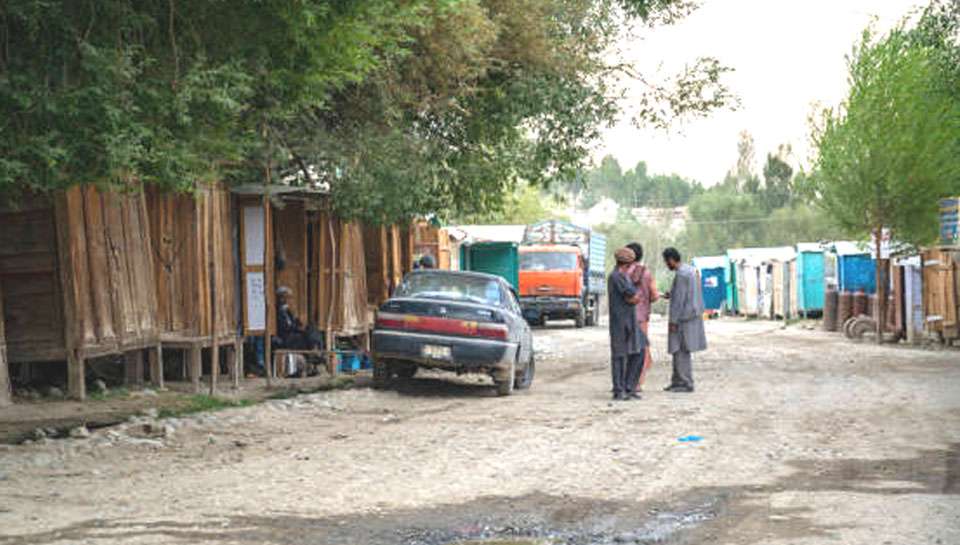The ongoing attacks on merchant shipping in the Red Sea by Yemen’s Iranian-backed Houthi rebels have boosted the Central Asian trade network known as the “Middle Corridor,” creating an opportunity for China and Iran. In October 2023, representatives from Iran, Kazakhstan, Turkey, Turkmenistan, and Uzbekistan met to discuss the development of the Middle Corridor’s second major conduit, the “Turkmenistan-Uzbekistan route.” This transit-trade route is valuable as it accelerates the flow of goods across national borders and stimulates economic growth.
The Middle Corridor, a transit-trade route from Europe to China, was initially planned in the late 2000s and traversed Turkey, the Caucasus Mountains, the Caspian Sea, and Kazakhstan. Since then, countries along the path have worked to make it a viable alternative to Eurasia’s other major east-west trade routes. Russia’s 2022 invasion of Ukraine highlighted the importance of the Middle Corridor as a new overland trade route to East Asia that bypassed Russia.
Capitalizing on the interest, Middle Corridor countries have tried to hasten the development of other transit-trade routes, with the Turkmenistan-Uzbekistan route making the most progress. The proposed transit-trade spur from Turkmenistan-Uzbekistan to Iran and potentially the Gulf could significantly benefit China and Iran.
In December 2022, a freight train carrying ninety-one, twenty-foot shipping containers left Tashkent’s outskirts for Turkmenistan’s port of Turkmenbashi, carrying copper. The shipment was the first to travel through the Turkmenistan-Uzbekistan route, which has been a key part of their economic development strategy. Turkmenistan and Uzbekistan have been early supporters of the Middle Corridor, aiming to attract foreign investment and realize parts of their Bright Path (Nurly Zhol) economic development strategy.
Turkmenistan has long sought conduits for its exports, particularly oil and natural gas, and has invested $1.5 billion to expand its key intermodal transshipment port at Turkmenbashi. Ashgabat invested $1.5 billion in the 2010s to expand Turkmenbashi’s port facilities, aiming to handle up to seventeen million tons of cargo, including 400,000 shipping containers, annually.
Uzbekistan has been working to build a globally integrated market economy, overhauling its national railways, financial and legal systems, and removing capital controls. In 2017, it allowed its currency to freely float, and in 2019, it removed capital controls. Uzbekistan has also supported tax and regulatory reform to raise its economic competitiveness, facilitating trade and encouraging foreign investment.
The Turkmenistan-Uzbekistan route and a transit-trade spur to Iran could create opportunities for China and Iran, particularly if extended to the Persian Gulf or Arabian Sea. This combination would provide Iran with a new trade conduit, as 85% of its international trade travels by sea.
Iran’s Minister of Roads and Urban Development emphasized the country’s unique geographical advantages and transit opportunities for regional trade. He suggested a link to the Middle Corridor, which could mitigate Western economic sanctions, facilitate trade with China, and provide an economic lifeline between the Turkmenistan-Uzbekistan route and Iranian ports. The link would also serve as a profitable transit-trade route.
China, which has always been expected to expand its influence in Central Asia, could benefit from such a transit-trade route. If successful, it could capture China’s interest and enhance its influence in not only Central Asia but also Africa and the Middle East.
Strategically, combining the Turkmenistan-Uzbekistan route and a transit-trade spur to Iran could improve China’s ability to deal with potential contingencies. This could lower China’s reliance on the seaborne transport of cargo across the Indian Ocean, which would help mitigate China’s “Malacca Dilemma,” the vulnerability China feels because much of its trade, particularly its imported oil and natural gas, passes through the Malacca Strait, a chokepoint that the United States could throttle. The proposed trade routes bypassing the Malacca Strait would decrease American influence over China and enhance China’s standing in the US-China rivalry.
The Middle Corridor’s expansion is promising, especially if Houthi attacks on merchant shipping in the Red Sea persist. However, trade volume along the TITR is still a small fraction of the 144 million tons of cargo transported by Russia’s Trans-Siberian railway in 2020. The corridor’s status as a viable east-west trade route relies on the safety and reliability of its path over the Caucasus Mountains, which has been threatened by periodic conflicts between Armenia and Azerbaijan.
If hostilities intensify or spread, freight insurance rates through the region would likely rise, making the Middle Corridor less attractive to shippers. Middle Corridor countries, particularly Turkmenistan and Uzbekistan, may support a transit-trade spur to Iran as an alternate outlet. A Middle Corridor expansion that includes a link between the Turkmenistan-Uzbekistan route and Iran would further cement the strategic bond between Beijing and Tehran, which may worry Washington. The link would provide both countries with an economic incentive to ensure unimpeded trade flow between China and Iran, complicating any American efforts to levy economic sanctions on either country in the future.


